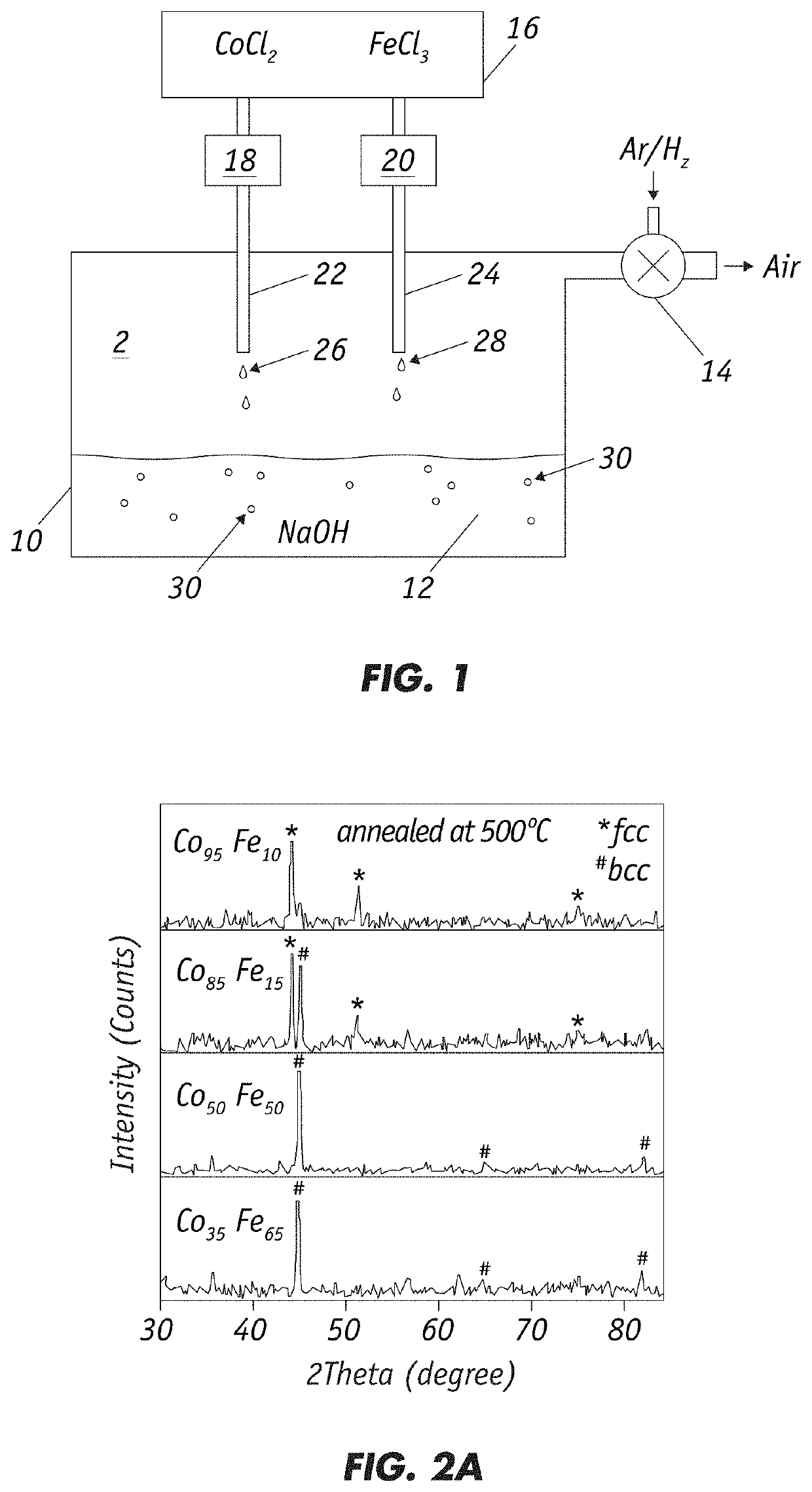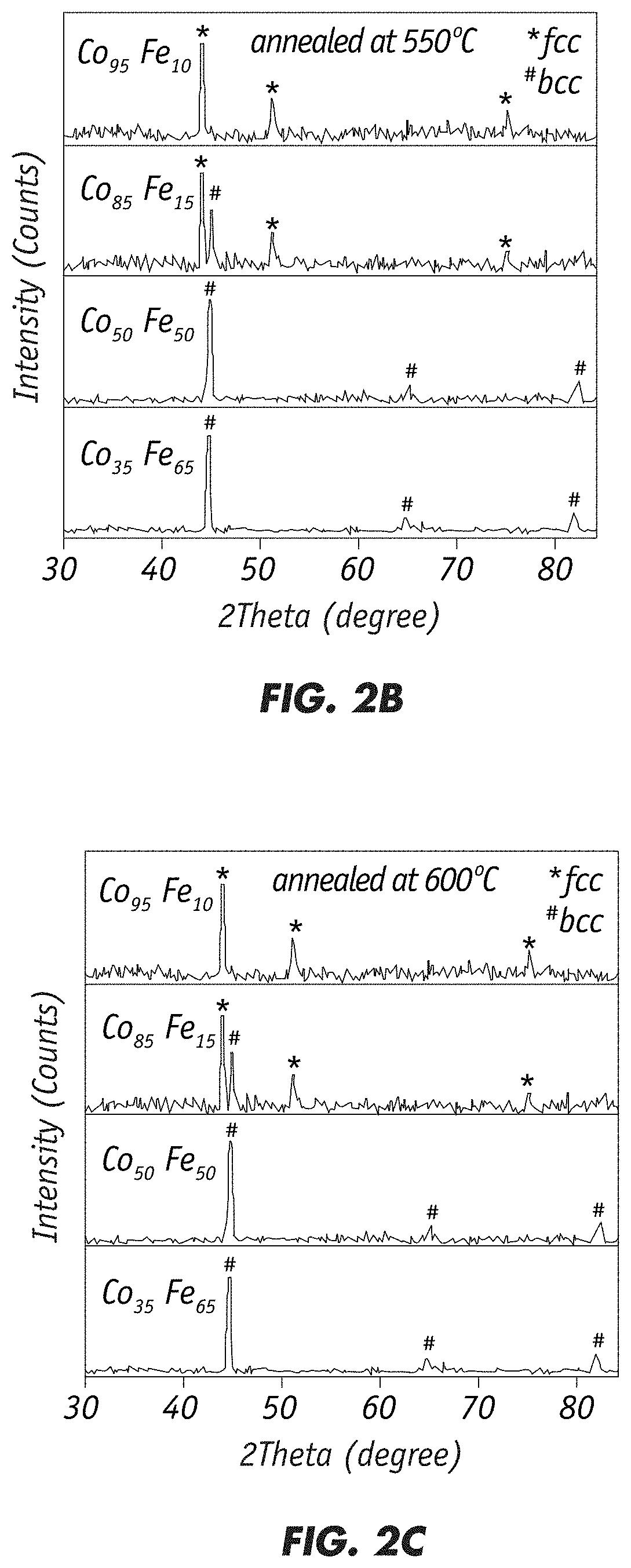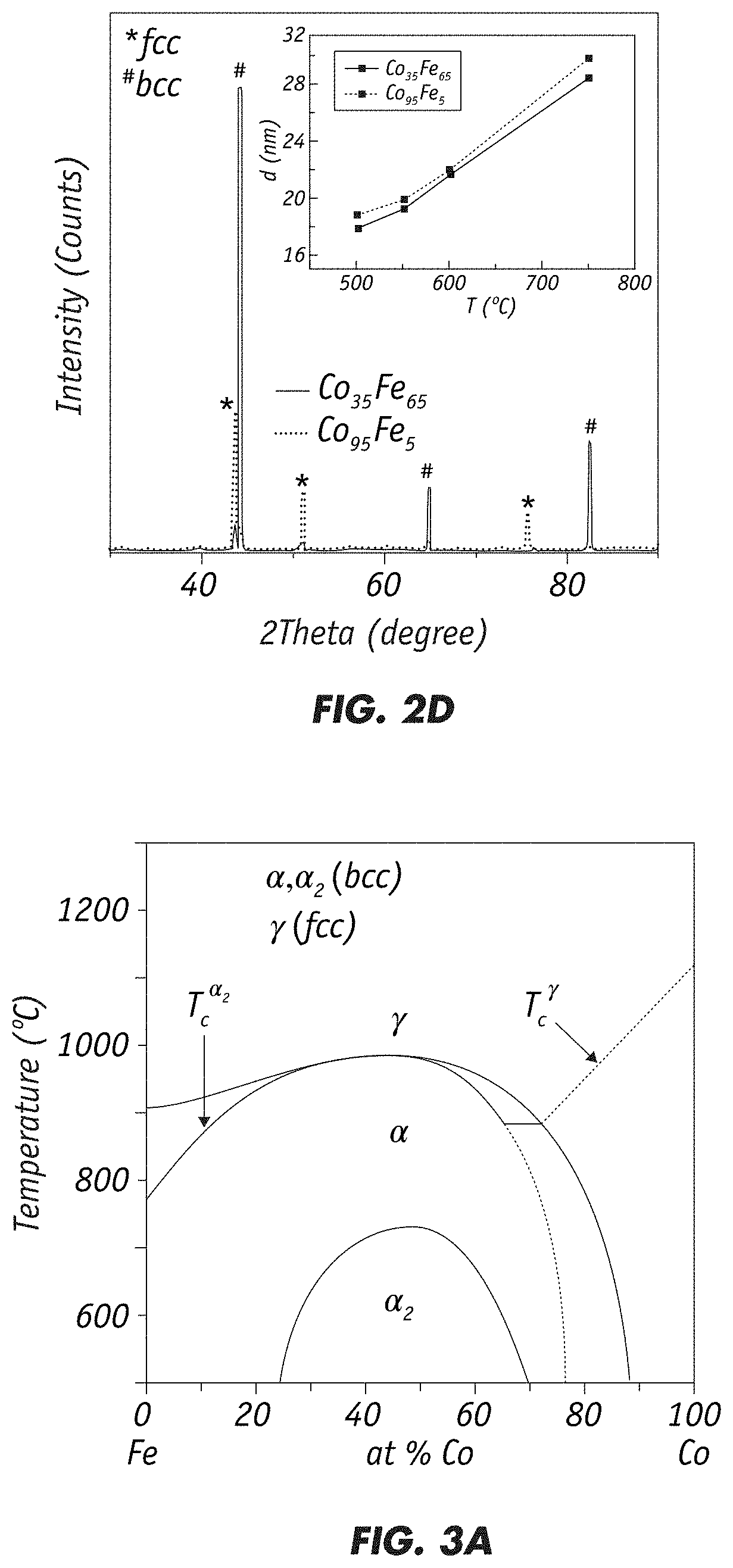Scalable process for manufacturing iron cobalt nanoparticles with high magnetic moment
a technology of iron cobalt nanoparticles and magnetic moment, which is applied in the field of magnetic nanoparticles, can solve the problems of high magnetic saturation cofe films that cannot be applied in device fabrication, inability to synthesise monodisperse cofe nanoparticles (nps) and other problems, to achieve the effect of enhancing magnetic performance, preventing increasing the coercivities of nanoparticles, and increasing the ms of nanoparticles
- Summary
- Abstract
- Description
- Claims
- Application Information
AI Technical Summary
Benefits of technology
Problems solved by technology
Method used
Image
Examples
Embodiment Construction
"d_n">[0031]The invention is directed to fabrication of magnetic nanoparticles (NPs) with high magnetic moment through chemical co-precipitation. Careful control of the alloy NPs' composition and size, with a narrow size distribution, is necessary for achieving high magnetic moment values. Ms value increases substantially with decreasing nanoparticle size. The inventive chemical synthesis technique employs oxygen-free conditions and controls the chemical process at atomic levels to produce precise alloy compositions and size distributions to achieve large Ms and small Hc.
[0032]As shown in FIG. 1, a method of chemical co-precipitation includes preparing an aqueous CoCl2 and FeCl3 metal salt solution in container 16. Preferably, a CoCl2 solution and a FeCl3 solution are prepared separately using distilled water and the two solutions are added into container 16. A hydroxide solution 12, e.g., NaOH solution, is prepared from distilled water in container 10. Air is removed by vacuum from...
PUM
| Property | Measurement | Unit |
|---|---|---|
| diameters | aaaaa | aaaaa |
| temperature | aaaaa | aaaaa |
| diameters | aaaaa | aaaaa |
Abstract
Description
Claims
Application Information
 Login to view more
Login to view more - R&D Engineer
- R&D Manager
- IP Professional
- Industry Leading Data Capabilities
- Powerful AI technology
- Patent DNA Extraction
Browse by: Latest US Patents, China's latest patents, Technical Efficacy Thesaurus, Application Domain, Technology Topic.
© 2024 PatSnap. All rights reserved.Legal|Privacy policy|Modern Slavery Act Transparency Statement|Sitemap



